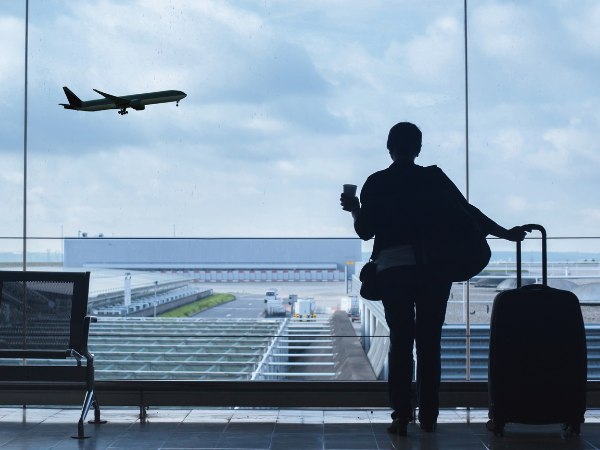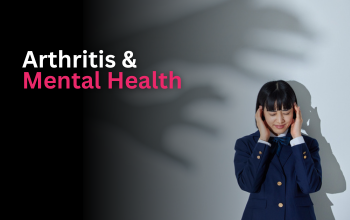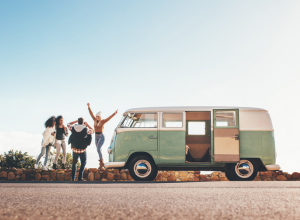Top Tips for Safe Travel
We’ve put together a list of tips that anyone can use to avoid getting sick while travelling (as we know there are many viruses going around right now, not just COVID!). After all, being ill while on a vacation can ruin your trip.
How to minimize the risk of infection when planning travel:
- Boost! Get your flu shot and keep up to date with your COVID-19 boosters. They help top up your virus immunity, reducing your risk of getting the flu and COVID. They also help your body clear the virus more quickly, lowering the chance of severe illness. The last thing anyone needs while travelling is to get so sick that they require medical care in a foreign place!
- Mask up! Masks have been shown to reduce the risk of contracting COVID (1). In indoor space, use high-quality masks (fit and filtration are the two most important factors). Respirator masks like N95, KN95, KF94, FFP2 masks that fit tightly around your face, with no gaps, are the most protective and offer the best filtration. Health Canada offers a list of masks that it has approved. Click here to learn more. Pack extra masks and bring hand sanitizer because surface transmission can still happen (especially high-touch surfaces on planes and in airports).

- Trip timing: Travel when COVID cases are low locally, as well as in your travel destination. Lower COVID levels in the community mean lower chance of getting infected.
- Destination: Choose a destination with public health protections still in place (this may be difficult over time as more countries relax these requirements). In some countries, however, people are still choosing to wear masks (e.g. countries like Singapore and Japan). Also, COVID and viruses, in general, transmit less easily in warm, humid environments, so a tropical destination is a good bet, and this also means you can do more activities outdoors, which is safer.
Also, consider the density of the population you are travelling to – if being in very large, packed crowds makes you uncomfortable, avoid destinations that are high density (e.g. large cities). High-density populations means more people in close contact.
- Flights: When possible, choose direct flights to your destination, on airlines that still require masking, as masking on airlines has been shown to lower risk of contracting COVID (2). Try to minimize the amount of time you are on a plane. Boarding and disembarking, in particular, are higher-risk periods where ventilation on the plane is poorer than cruising at altitude.
o On the flight, keep your mask on at all times if possible and turn on the air nozzle above you to max right away, it blows HEPA filtered air.
o Distance – if you are sitting one row in front of or behind someone who is sick and coughing/sniffing, whether it be on plane, bus, etc. ask to move seats.
- Airport transfers: Coach buses have a high risk of transmission if you are on them for extended periods of time, as the windows do not open and ventilation is generally poorer than e.g. a public street bus where the doors are opening frequently to let fresh air in (2). Consider how to get to your destination from the airport in a way that minimizes your risk.
- Accommodations: Plan your accommodations according to your risk tolerance – large hotels with hundreds of rooms will be busier and you will come into contact with more people. To reduce your risk, consider an Airbnb apartment to yourself in a smaller building, or choose a smaller hotel that has rooms with direct access to outside or ground floor to limit the time spent in elevators.
- Group excursions and activities: As previously mentioned, coach bus tours are high risk for COVID transmission because the ventilation is often poor on these busses, windows do not open, and people are on them for hours (2). Choose group tours that are open air, shorter duration, with no shared food to avoid everyone’s hands going into the food.
Eating outdoors is always safer than eating indoors due to better ventilation. Consider dining al fresco if you are in a place with good weather!
- A portable CO2 monitor can also help you assess whether a space has good ventilation; CO2 readings are a proxy for good ventilation, and tell you how much rebreathed air you could be inhaling.
How to gather safely for the holidays:
- Plan around the risk of the most vulnerable person in the group. If you have an older adult attending (70+), immunocompromised or other high-risk individual, everyone should take a rapid antigen test (RAT) a few hours before attending the gathering. If anyone is symptomatic, stay home and assume it is COVID as RATs often produce false negatives. This is how one of my colleagues contracted COVID – someone came to her dinner party thinking they “just had allergies”. Consider masking until food is served if there is someone extremely high risk attending.
- Outdoor gatherings are safest due to having the best ventilation, but cold weather may not be conducive to outdoor gatherings. If indoors, open windows, turn on fans (hood, bathroom, etc.) to create air flow through the home. Ventilate, ventilate, ventilate! COVID spreads through the air like cigarette smoke, so the fresher the air circulating, the better to remove the virus. Interesting fact: New York and Hong Kong introduced mandatory ventilation requirements for their restaurants to reduce the risk of COVID superspreading events. All restaurants are required to meet a minimum of six room volume air exchanges per hour.
- Consider investing in a HEPA filter appropriate for the size of the room if you tend to have people over often. Running a HEPA filter can reduce the amount of virus floating through the air.
Keep in mind with more mobility, travel, and people contact, there is always going to be some element of risk of contracting COVID, but that risk can be greatly reduced given we now know how virus spreads – even with new, more transmissible variants, the mode of transmission stays the same. And the important part is to remember to layer protections like masking, testing, staying home when sick, handwashing, and ventilation on top of vaccinations to minimize the risk of infection.
.
References
- Andrejko KL, Pry JM, Myers JF, et al. Effectiveness of Face Mask or Respirator Use in Indoor Public Settings for Prevention of SARS-CoV-2 Infection — California, February–December 2021. MMWR Morb Mortal Wkly Rep 2022;71:212–216. DOI: http://dx.doi.org/10.15585/mmwr.mm7106e1
- Wang Q, Gu J, An T. The emission and dynamics of droplets from human expiratory activities and COVID-19 transmission in public transport system: A review. Build Environ. 2022 Jul 1;219:109224. doi: 10.1016/j.buildenv.2022.109224. Epub 2022 May 24. PMID: 35645454; PMCID: PMC9126829.




















































